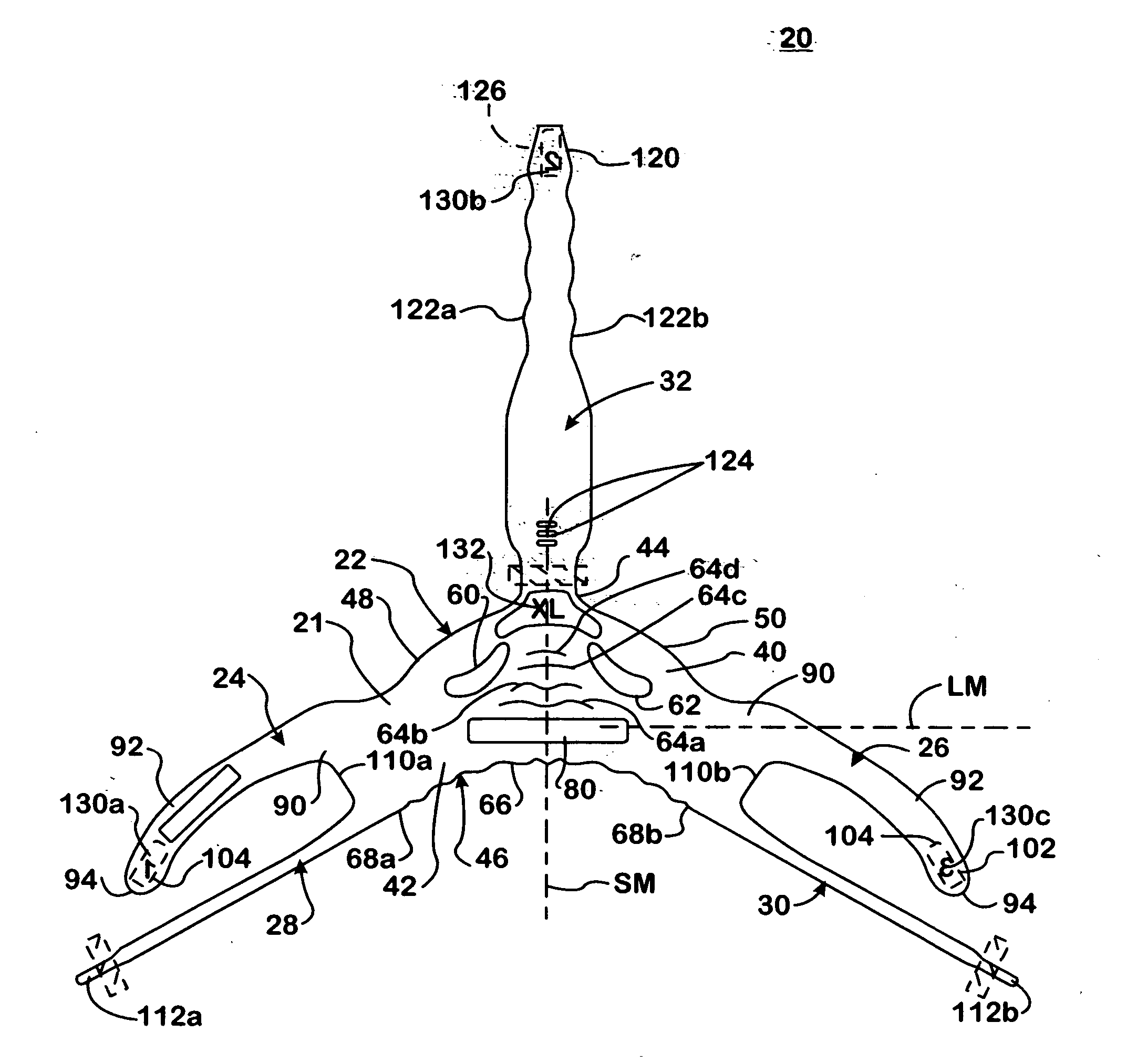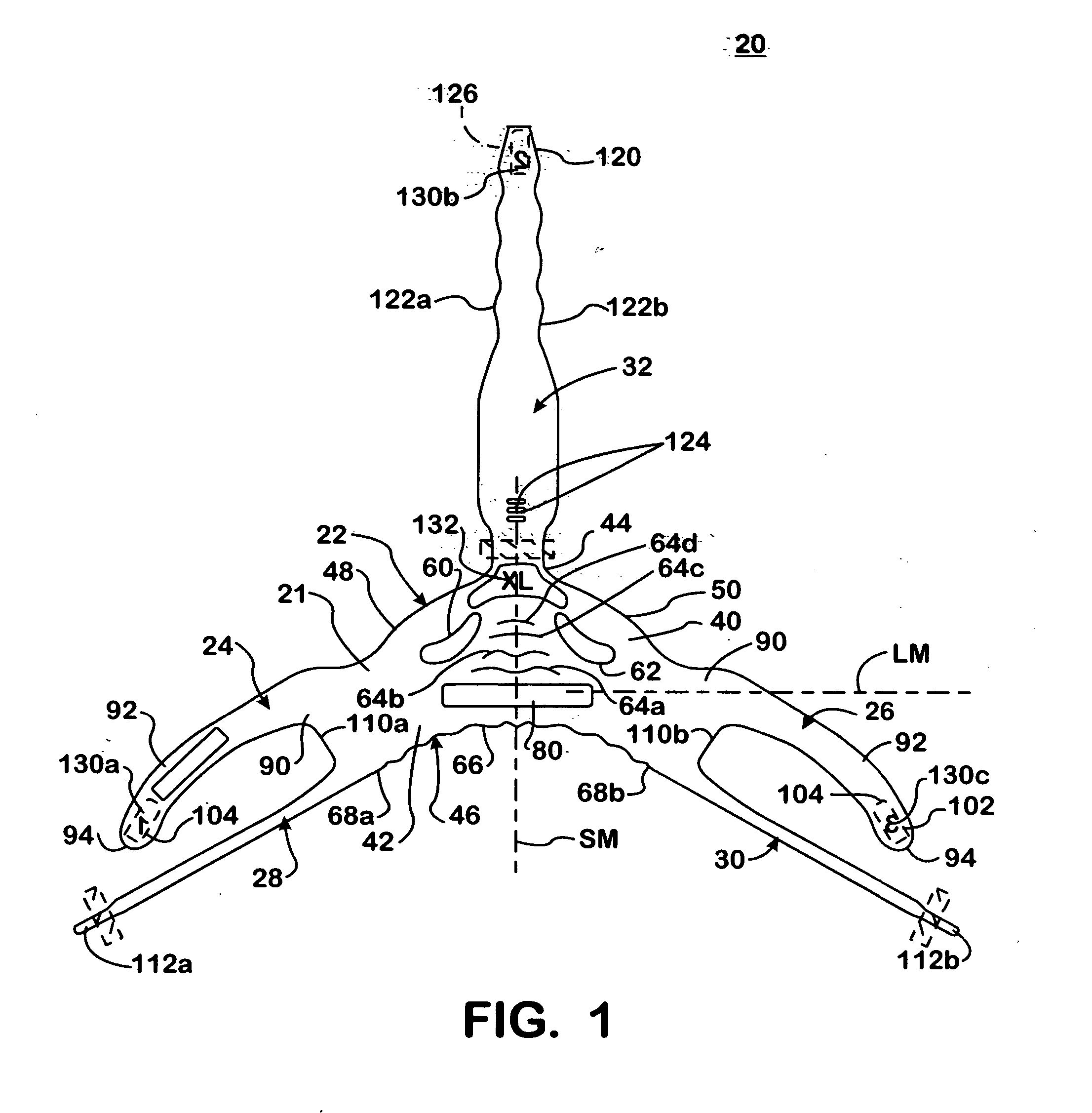Infant headgear for supporting a patient airway interface device
- Summary
- Abstract
- Description
- Claims
- Application Information
AI Technical Summary
Benefits of technology
Problems solved by technology
Method used
Image
Examples
Embodiment Construction
[0014] One embodiment of a headgear 20 in accordance with principles of the present invention for use with a patient airway interface system is shown in FIG. 1. As a point of reference, the headgear 20 is adapted to be transitionable from a flat or two-dimensional state (as shown in FIG. 1) to a wrapped or three-dimensional state (shown, for example, in FIGS. 2A-2C) when applied to a patient's head, and is, in one embodiment, adapted and sized for use with an infant (e.g., pre-mature infant or neonate). As a point of reference, FIG. 1 illustrates an interior surface 21 (referenced generally) of the headgear 20 (i.e., the side or surface of the headgear 20 intended to contact the patient's head). With this in mind, and relative to the flat state of FIG. 1, the headgear 20 includes a central body 22, first and second forehead straps 24, 26, first and second lower straps 28, 30, and a vertical strap 32. Details on the various components are provided below. In general terms, however, th...
PUM
 Login to View More
Login to View More Abstract
Description
Claims
Application Information
 Login to View More
Login to View More - R&D
- Intellectual Property
- Life Sciences
- Materials
- Tech Scout
- Unparalleled Data Quality
- Higher Quality Content
- 60% Fewer Hallucinations
Browse by: Latest US Patents, China's latest patents, Technical Efficacy Thesaurus, Application Domain, Technology Topic, Popular Technical Reports.
© 2025 PatSnap. All rights reserved.Legal|Privacy policy|Modern Slavery Act Transparency Statement|Sitemap|About US| Contact US: help@patsnap.com



